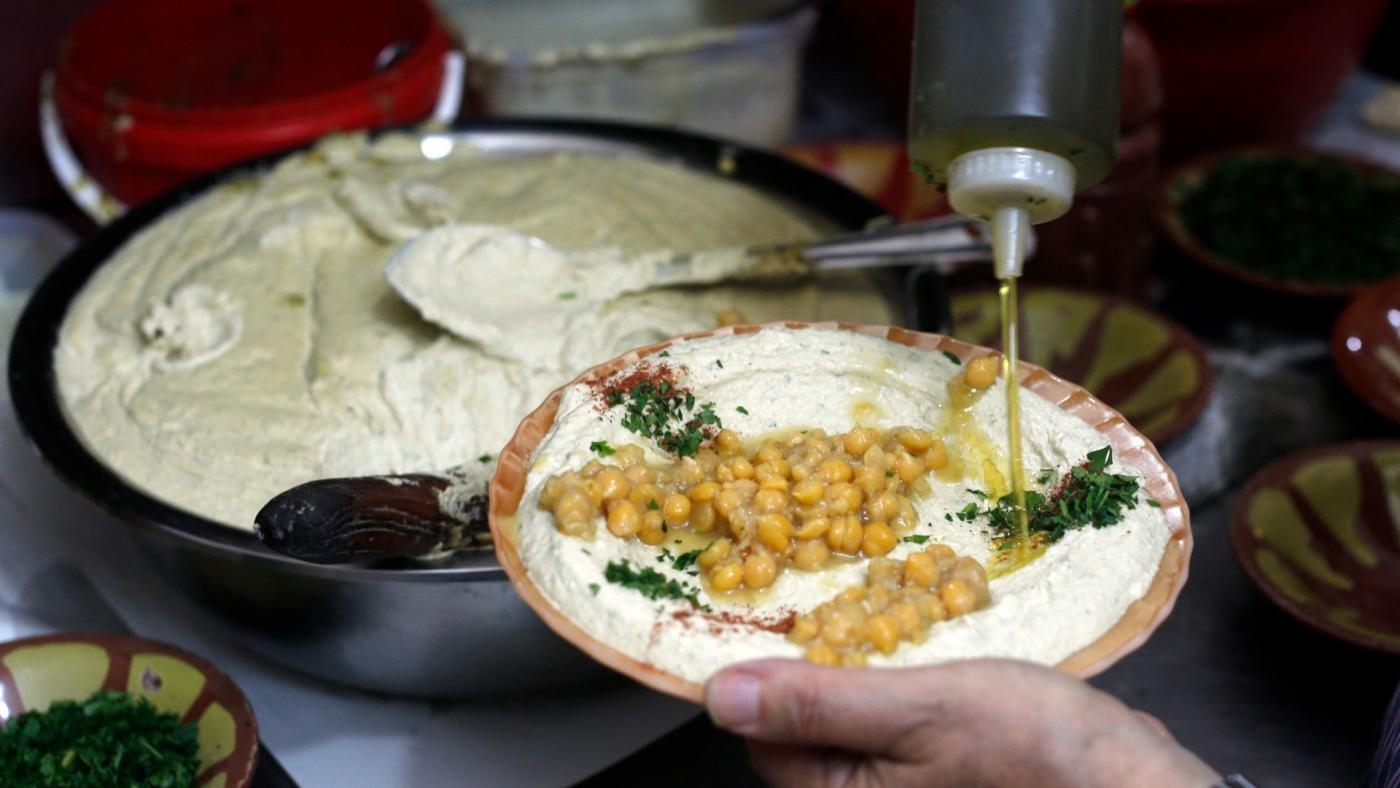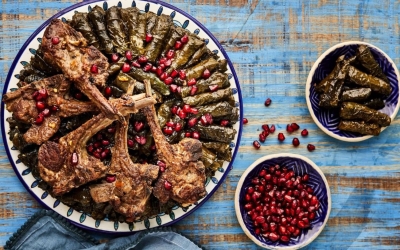The politics of hummus: Israel's search for cultural identity

It didn’t take long for social media commenters to roast the year-end 2022 TasteAtlas Awards for the world’s best cuisine, released on 21 December.
Ranking the top 50 cuisines, the travel food guide listed Italian, Greek and Spanish food as the year’s top three, with Slovakia coming in last.
Palestinian cuisine is one of several cultural artefacts that go beyond the question of identity and nationalism, protecting against a people's very extinction
Criticised for being "ridiculous", "absolute nonsense”, and a list for people who have "never eaten food", the list ranked several countries higher or lower than popular opinion, and many other cuisines were notably absent.
The website published a similar list in June 2022 which went viral for its "egregious" rankings.
New MEE newsletter: Jerusalem Dispatch
Sign up to get the latest insights and analysis on Israel-Palestine, alongside Turkey Unpacked and other MEE newsletters
Responding to the backlash, TasteAtlas tweeted: "Every year when we publish the list, there are a lot of angry people, even calls from embassies. We learned to live with it."
Yet, the strong, immediate reaction served as a reminder that culinary traditions are hardly a neutral cultural practice, and can be a vehicle for various kinds of political and nationalist discourses.
Palestinian cuisine, for example, is one of several cultural artefacts that go beyond the question of identity and nationalism, serving as a protective barrier against the people's very extinction.
On the TasteAtlas list, Palestine ranked 42nd, coming fifth among the six MENA countries that made it to the list after Turkey, Iran, Syria and Lebanon, and followed only by Tunisia.
While many Palestinians celebrated the recognition, several Jewish Israelis and their supporters expressed their dissatisfaction. They mainly complained about the recognition of Palestine as a state, made worse by Israel’s absence from the top 50 list. Israel ranked 81st place.
The Israeli news site Yedioth Ahronoth called the list a "political statement" that "snubs Israel in favour of 'Palestine'". Yes, the site placed scare quotes around the word Palestine.
"Clicking on [Palestine] takes you to the page that mentions dishes normally associated with Israeli cuisine - such as falafel and hummus," added the newspaper.
Cultural fragility
It might be easy to dismiss the reaction as identity politics and be amused - or possibly flabbergasted - by the fact that Israelis think falafel and hummus are Israeli. Israel’s appropriation of Palestinian and Arab culture is well documented.
What the reaction, however, highlights is that if there is a unique feature about the Jewish Israeli culture it is its fragility, certainly when it comes to culinary customs.
For the Zionist movement going as far back as the early 20th century, the construction of a food culture mirrored that of a nation. It was meant to breathe into the Zionist identity in Palestine a sense of historical connection to the land.
In an effort to establish themselves as the "natives", European Jewish settlers adopted the cultural characteristics and customs of Palestine’s local population.
Consider that Theodor Herzl himself wore an Assyrian-looking beard, allegedly alluding to the region’s ancient roots and cultural identity. Likewise, several Israeli leaders changed their names from Polish, Russian and German to Hebrew-sounding names. For instance, David Ben-Gurion was born David Grun and Golda Meir was Golda Mabovitch.
Likewise, beginning in the 1920s, Jewish settlers embraced the culinary symbols and practices of the native Palestinians. The list was extensive, from Sabra (from the Arabic sabr, prickly pear, appropriated to mean the "new Jew" in Palestine) to Jaffa oranges, all the way to falafel, tahini and hummus. All are representative of the Palestinian production cycle, life and culture.
Unlike European Zionists, Palestinians could anchor their national identity in an existing society that, among other things, had its own cuisine and was deeply entwined with the region’s culture and history.
That provided Zionism with a set of native recipes - literally - to facilitate the construction of an "indigenous identity" for European Jews with varied cultural backgrounds, none of which organically linked to the region.
A settler-colonial endeavour, the Zionist notion of "nativisation" inevitably changed from adopting the local culture, including the food, to claiming it as its own.
In the first Zionist cookbooks from the 1930s onwards, Palestinian dishes were referred to as "Israeli". When the evidence was lacking, as always is, they were attributed to Mizrahi Jews who arrived in the Zionist state from Arab countries.
To establish historical legitimacy, some of the culinary appropriation was justified as another "return". The return this time is not only to the so-called ancestral land of Eretz Yisrael after two millennia of exile, but to the ancient Jewish/Biblical customs that Palestinian Arabs have preserved since the 6th century.
For instance, hummus, goes the claim, was an ancient Biblical dish and has roots in the Biblical words hamits and himtsa (chickpeas). The words, however, are likely a reference to a blend of fermented chickpeas used as animal fodder in ancient Canaan.
Culinary delusion
The question should not be about why Israel did not make the top 50, but whether Israel should be on the TasteAtlas’ list at all
Moving from adopting the local culture to appropriating it could not have been done without the denial of the culture’s originators.
Native Palestinians were erased both physically and symbolically from the Jewish state’s collective memory and public spaces.
Those who resisted the erasure and remained in their land now face dispersion and control.
As such, the acknowledgement of a rooted Palestinian culture, let alone admitting that Zionism needed that culture to build a separate political entity and identity in Palestine, is threatening to Israel’s assumed historical entitlement and claims of indigeneity.
That dynamic has also created a painful paradox where the Zionist superior and racist attitude towards Palestinians had to go hand in hand with the adoption of their "inferior" culture, including their local cuisine.
Indeed, an individual may wander around Tel Aviv and consume a lovely dish of hummus drenched in olive oil, even put a falafel sandwich on a postcard and name it a national snack. One may as well sell shawarma in New York and call it Israeli.
But that is simply food culture, acquired through adoption, absorption, and popularity. It is not effectively different from a Frenchman making Italian pizza, or an Englishman selling chicken tikka masala.
Food culture - acquired and popularised - does not qualify as native cuisine, as much as Zionist colonisers of Palestine and their apologists would like to claim.
The question, therefore, should not be about why Israel did not make the top 50, but whether Israel should be on the TasteAtlas’ extended list at all.
The views expressed in this article belong to the author and do not necessarily reflect the editorial policy of Middle East Eye.
Middle East Eye delivers independent and unrivalled coverage and analysis of the Middle East, North Africa and beyond. To learn more about republishing this content and the associated fees, please fill out this form. More about MEE can be found here.






